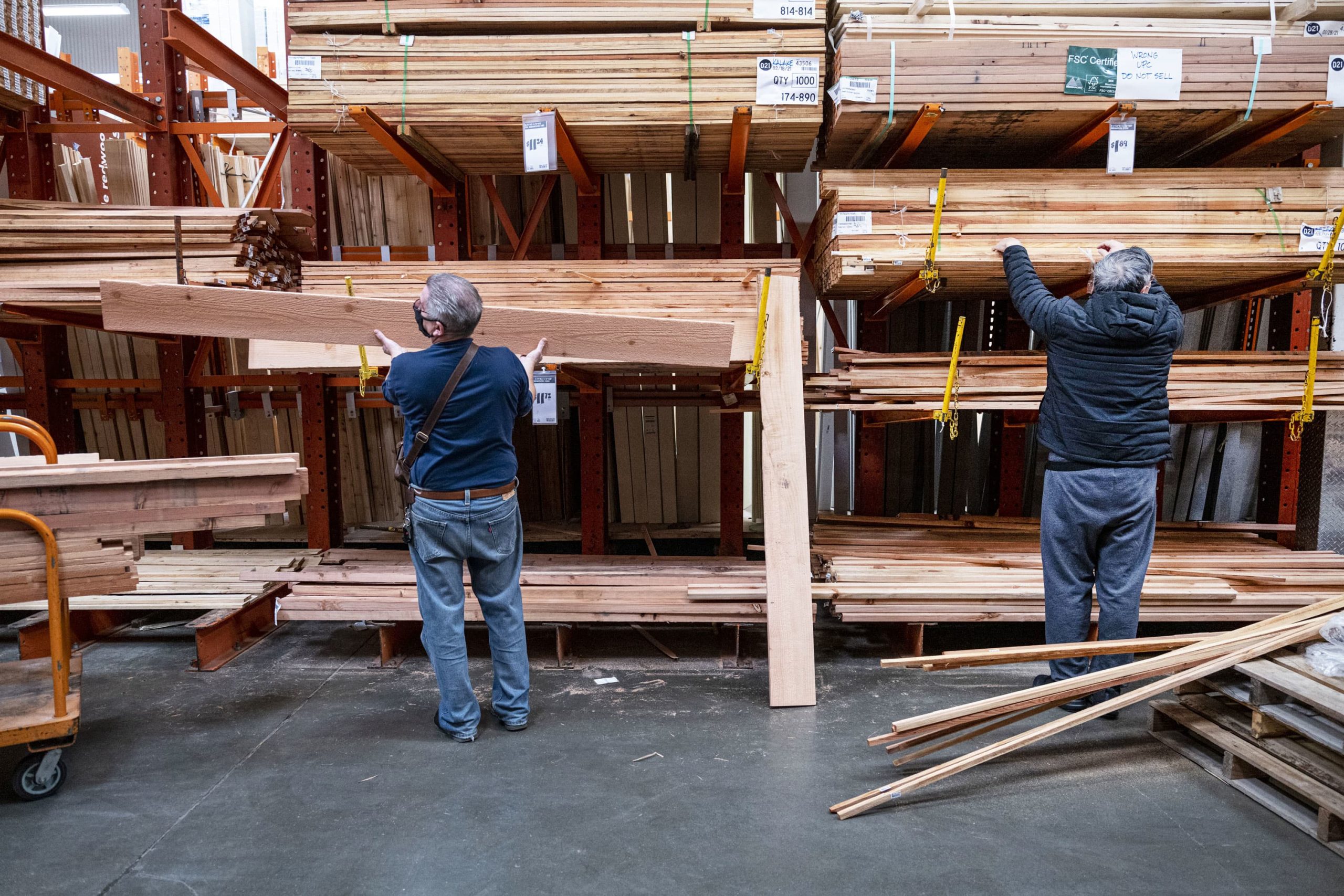A customer wearing a protective mask loads lumber at a Home Depot store in Pleasanton, California, on Monday, Feb. 22, 2021.David Paul Morris | Bloomb
A customer wearing a protective mask loads lumber at a Home Depot store in Pleasanton, California, on Monday, Feb. 22, 2021.
David Paul Morris | Bloomberg | Getty Images
Home Depot’s next CEO Ted Decker said he wants home professionals to think of the company as more than a store of convenient purchases.
The retailer wants to win contractors’ larger, planned orders, like thousands of feet of flooring — not just be their choice for last-minute shopping when they scramble to find a tool or finish a job. That significant shift is part of Home Depot’s growth strategy as it tries to sustain momentum beyond the pandemic and reach $200 billion in annual sales.
“We’re sort of the 7-Eleven for pros — convenience, value, tremendous product and brands — but what we’re building now is something completely different and revolutionary to get the pro planned purchase,” Decker, the company’s chief operating officer, said Tuesday on the company’s earnings call. He takes over as CEO on March 1.
Home Depot reported that its sales increased 11% in the fiscal fourth quarter compared with the year-earlier period. But the retailer gave a conservative outlook for the next fiscal year, with sales trends “slightly positive” and earnings per share growing at a low single-digit pace.
Home Depot executives did not say when the retailer expects to hit that $200 billion goal, but it would mark a nearly $50 billion gain from its annual sales in the year ended Jan. 30.
Pandemic-fueled home-improvement projects have lifted Home Depot’s sales by more than $40 billion over the past two years. That’s roughly the same amount of total sales growth the company reported from 2009 to 2018.
About half of total sales come from home professionals, Chief Financial Officer Richard McPhail said. He estimated on the company’s earnings call that the retailer’s total addressable market in North American is more than $900 billion.
Archrival Lowe’s is also trying to chase the more reliable and lucrative pro customers. Historically, Lowe’s has had a smaller share of its business coming from professionals, with nearly 75% to 80% coming from do-it-yourselfers.
Over the past several years, Home Depot has been investing in supply chain hubs to help it better cater to pros. It’s in the middle of a five-year plan to invest $1.2 billion in its supply chain, including the ongoing construction of large facilities, called flatbed distribution centers, that can store and deliver larger orders.
It built the first one in Dallas and plans to eventually open 40 of them across major U.S. markets. It previously filled such orders out of the stores themselves.
Decker said the giant hubs have allowed Home Depot to carry a wider merchandise mix and given pros more assurance that they can get quantities they need. For example, he said a conventional store could be expected to stock only about 3,000 square feet of flooring — or enough for three odd jobs.
With the flatbed distribution centers, he said Home Depot is getting sizable single orders such as 7,000 square feet of flooring and 150 doors.
Scot Ciccarelli, a retail analyst at Truist Securities, said Home Depot wants to change professionals’ thought processes.
In the past, a pro might run to the Home Depot store when a saw blade breaks, but now, considering the changes, a contractor might be convinced to get doors and millwork, too.
“If you can do a big multifamily project and you can start to gain traction with that, that becomes kind of a big deal,” Ciccarelli said.
www.cnbc.com
